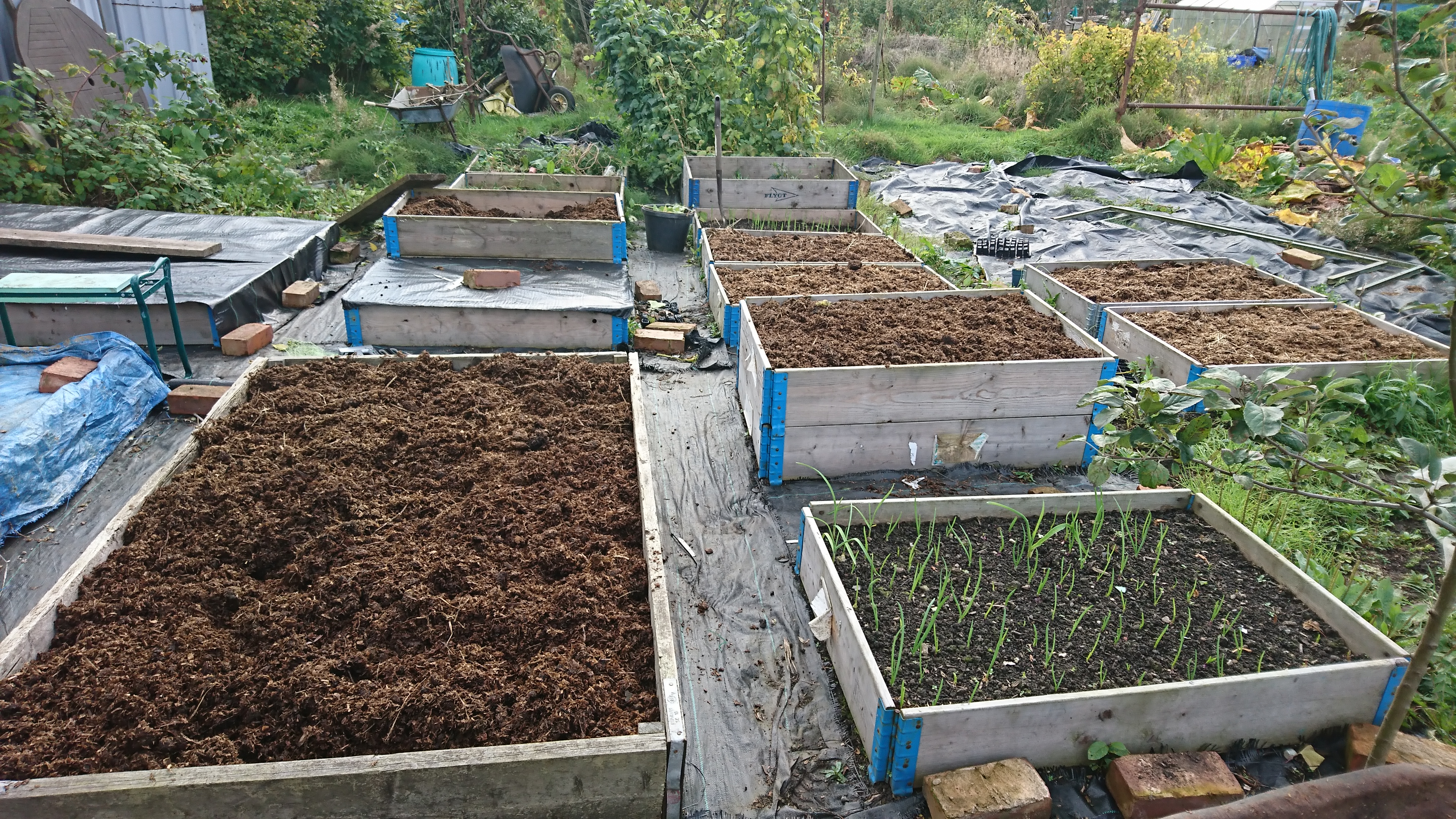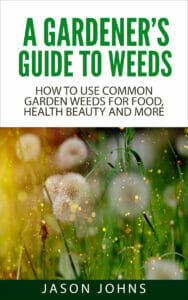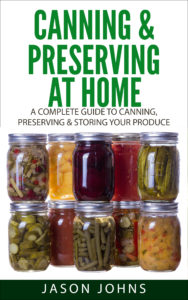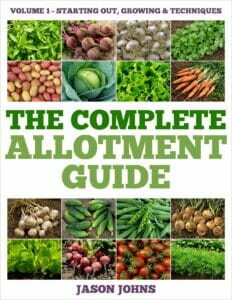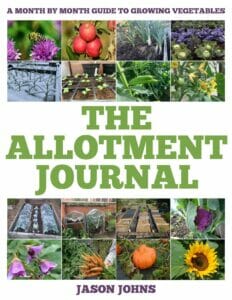Well, summer is officially finishing, and if you live where I do, it never really got started. It’s been a mediocre summer with plenty of rain and cool, damp weather. Powdery mildew has loved it and many of my plants are suffering from this fungal infection now.
While it has been a good year for some plants, for others it has been a terrible year. I have not been able to get any sort of bean to grow well. My runner beans refused to germinate no matter how many I planted, my dwarf French beans put on a poor show and the broad beans were frankly embarrassing. However, the ornamental squash plants have loved the weather and grown like crazy, though now they are suffering from powdery mildew.
The leeks have died from what looks like rust and allium leaf miner, yet the garlic, which I pulled back at the start of July was the best crop I ever had. While most of my onions were good, there were a number suffering from white rot, which I am assuming is down to the damp weather.
But, it’s another year, lessons have been learnt and it is time to move on and get on with preparing my allotment for winter and for next year. So what jobs can you be getting on with?
Composting Dead Plants
All those plants that have died off can now be pulled and added to your compost heap. Any diseased plants (such as my leeks) should not be composted for risk of spreading the disease and so are disposed of. I bag mine up and take them to the local household recycling site where they are hot composted, which should kill the disease.
All those weeds which have crept into your allotment or garden can be removed before they seed or die back over winter. Perennial weed roots should not be composted as you risk spreading them, but everything else can be. Remember to turn your compost regularly to help speed up the composting process.
Amending Your Soil
It is time to top up your raised beds and amend your soil. For most of us, this means digging in compost or manure. While you can leave it exposed to the air so the frost can break the soil down, many people cover bare soil to stop weeds from getting established.
I use raised beds and I top them up with fresh manure (delivered free to our site). I then cover this with thick black plastic (which I reused every year) which helps to keep it warm and speed up the composting process. Then in the spring, the fresh manure has broken down and I dig in a little compost or sharp sand and we’re good to go!
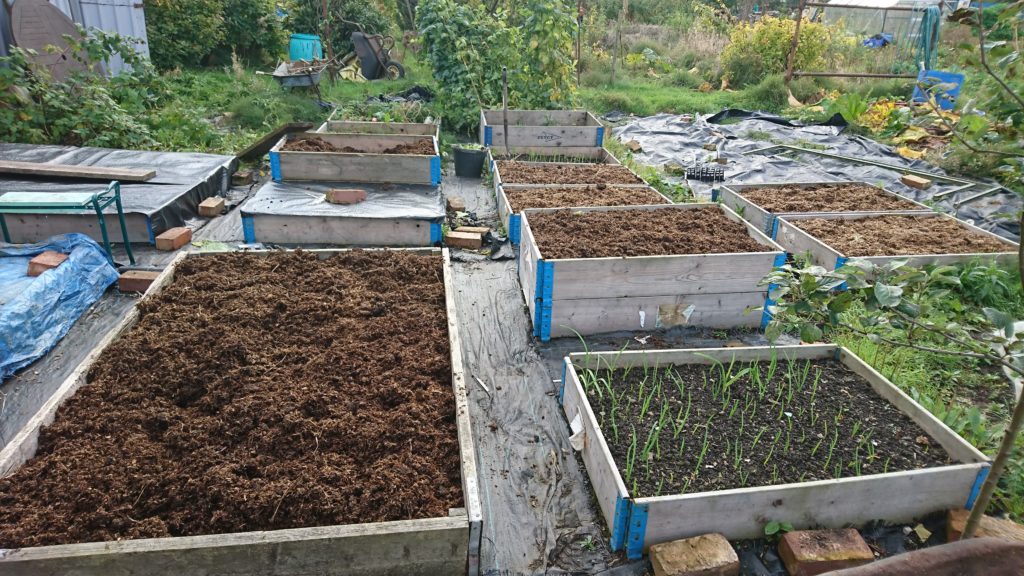
Protect Tender Plants
At this time of year, the temperature can drop suddenly, so any squashes need to be fleeced if the temperature goes down. All squash plants are very susceptible to cold damage so covering them with some horticultural fleece keeps the worst of the cold off them and allows the fruit to continue to ripen.
Note Structural Jobs
While you may not have the time to do structural jobs around the allotment, you can certainly start taking notes of jobs that need to be done. If any buildings or beds need repairing, take a note and start getting together the items you need to do the job so that when you have a spare minute and the growing season is over, you can repair them.
Plan Winter Crops
It is also time to start thinking about winter crops and what you are going to grow. Garlic and onions are best planted in October or November, so they have some cold to develop fully. Garlic in particular needs the cold for it to split into bulbs. Look through seed catalogues and place your order, though if you are after some of the rarer garlics such as elephant garlic, it may have already sold out as it is so popular!
Broad beans, chard and some brassicas can be overwintered, so you can prepare these and buy plants or seeds as required. Look at what you can grow in your greenhouse or polytunnel over the winter months. Lettuce can grow quite late in the season if it is protected from the cold, though some varieties will tolerate a degree of cold outside.
Make Leaf Mold
With trees shedding leaves, these can be gathered up and turned into leaf mold, which is great to add to your soil. Remember some of the tougher leaves such as oak leaves need to be shredded first to help them break down.
Harvest and Store
Of course, let’s not forget the fun part of this season … the harvest!
Many of your fruits and vegetables will be ripe now, so you get to pick them and eat them! Many of us face a glut of fresh produce, so you need to store it correctly for use later in the year.
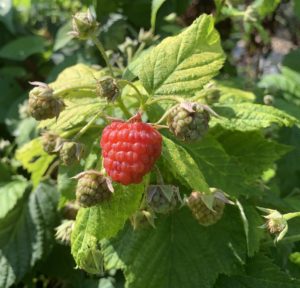
How you store everything will depend on what it is. Potatoes, for example, can be dried and then stored in hessian sacks in a cool dark place. Many other vegetables need processing; either blanching and freezing or turning into a dish and freezing. I turn my tomatoes and courgettes into a ratatouille which I then freeze. Berries are made into jams or frozen whole for later us and apples are made into something, though you can store them for several months if you have the space and the correct conditions.
There is lots to do with your harvest from all your hard work and this alone keeps most of us busy through September and into October.
As you can see, there is a lot you can be getting on with. While many people think this is a ‘quiet’ time of year, there are plenty of things to do that will help make life easier next year, plus you get to enjoy the fruits of your labour.
